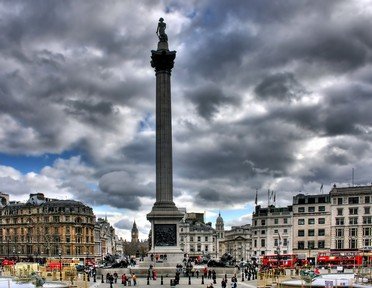Quiz Answer Key and Fun Facts
1. Many of you might recognise this as the spot where the Heir of Slytherin announced that the Chamber of Secrets was open, but it was once part of an abbey, built under the reign of Henry III. Unfortunately it, like many of the possessions of the Catholic Church, was seized when a later monarch decided to break with the Catholic Church. Which English monarch was responsible for the seizure of church property?
2. This historic figure can be found standing atop this lonely column in Trafalgar Square. Tour guides will tell you that this Englishman has been placed this high to enable him to see the sea, which featured so prominently in his life, death and legend. Who was this British military man, so wonderfully honoured?
3. This gated street contains the home of an important British politician. Who is it, who traditionally lives at Number 10, as it is referred to in Britain?
4. Tourists often become confused about the nickname of this familiar sight. They generally know the name but apply it to the tower or clock instead of the bell to which it belongs. From whom is the bell believed to have gotten its nickname?
5. Framed by the London Eye, this statue honours a queen of the British Iceni tribe who led a revolt against the Romans. On the death of her husband in the first century, the Romans claimed her kingdom, had her whipped and raped her daughters. Who was this warrior queen?
6. This imposing structure was built in the 11th century. It is the central keep to a larger, well-known London structure with additional buildings and fortifications added over time. Who was responsible for having this building erected?
7. Nestled in among buildings that are both larger and more modern, this playhouse is a re-creation of the one made famous by the Bard, who will arguably always be England's most famous playwright. Who was he?
8. These medieval castle ruins, located in Cornwall, in Southwest England, are said to be the birthplace of a legendary British king. Historians offer differing opinions about whether or not this much-storied king ever actually existed or not. While the almost magical powers ascribed to him and his knights are no doubt grossly exaggerated, there is historical evidence that such a person may have existed in the 5th or 6th century. Who was this legendary ruler?
9. This stately castle may be recognised by many from the British television show "Downton Abbey" (which is not the building's real name). One of the previous owners of this castle became famous world-wide because of an amazing archeological discovery he made in Egypt, in 1922. Who was this "cursed" gentleman?
10. To commemorate the centenary of the First World War, ceramic poppies were placed around the moat of the Tower of London. Who or what does each of these poppies represent?
Source: Author
skunkee
This quiz was reviewed by FunTrivia editor
bloomsby before going online.
Any errors found in FunTrivia content are routinely corrected through our feedback system.

